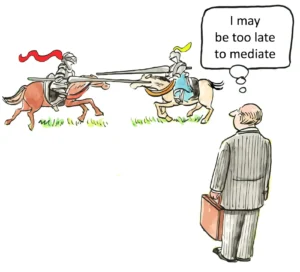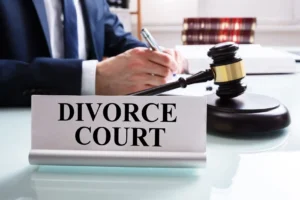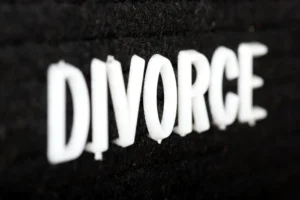Mastering Short-Form Content to Reach Legal Audiences
Mastering short-form content to reach legal audiences is not just a trend-it’s a necessity for any attorney or law firm seeking to thrive in today’s digital-first world. In an era where attention spans have dwindled to mere seconds, the ability to communicate complex legal concepts concisely and persuasively is a competitive advantage. The legal industry’s adoption of short-form content strategy is not about diluting the law’s seriousness but about meeting people where they are: scrolling, searching, and seeking clarity in an information-saturated environment.
Short-form content, whether in the form of videos, blog posts, or social media updates, has become the linchpin of digital marketing for law firms. The modern legal consumer expects answers quickly. They want to know if you understand their problem and can offer a path forward. This expectation has given rise to a new breed of legal communicators-attorneys who can distill the essence of a statute, a recent ruling, or a procedural tip into a 60-second video or a 200-word post. The goal is not to provide legal advice online but to build trust, showcase expertise, and drive meaningful engagement.
The statistics are compelling. By 2025, over 80% of internet traffic is projected to be video, with short-form videos accounting for the lion’s share. Platforms like TikTok, Instagram Reels, and YouTube Shorts are not just for dance trends or viral memes; they are powerful vehicles for law firm brand awareness and client engagement strategies. A well-crafted, short video explaining the basics of estate planning or busting common myths about personal injury claims can reach thousands-if not millions-of prospective clients in a matter of hours. The viral potential of such content is unmatched, especially when compared to traditional, long-form legal articles that may never leave the firm’s website.
But why does short-form content work so well in the legal field? The answer is twofold: accessibility and relatability. Legal issues are often intimidating. The average person may hesitate to call a lawyer or read a lengthy statute, but they will watch a brief, approachable video or scan a succinct blog post. By humanizing the law and demystifying legal processes, attorneys can position themselves as approachable authorities. This is particularly important in a climate where trust in institutions, including the legal system, is frequently questioned.
Short-form legal marketing is not just about brevity; it’s about clarity and precision. Each word, image, or second of video must serve a purpose. The best short-form content answers a specific question, addresses a common pain point, or provides a timely update on a legal development. For example, a 30-second clip explaining what to do after a car accident, or a quick post outlining the steps to file for bankruptcy, can provide immense value to someone in distress. These bite-sized pieces of information are easily shareable, increasing the likelihood of organic reach and engagement.
The conservative legal audience, in particular, values substance over flash. They are less interested in gimmicks and more concerned with credibility, tradition, and respect for the law’s gravity. For this audience, mastering short-form content means striking a balance between accessibility and authority. It requires a disciplined approach: avoiding sensationalism, focusing on facts, and maintaining a tone that reflects the seriousness of legal practice. This is where the writing style of Justice Clarence Thomas offers a model-clear, direct, and unembellished, yet deeply rooted in principle.
Of course, the promise of short-form content comes with challenges. Legal professionals must navigate a minefield of compliance and ethical considerations. Every post, video, or tweet must adhere to advertising regulations, avoid unauthorized practice of law, and respect client confidentiality. The brevity of short-form content can sometimes tempt creators to oversimplify or omit crucial context, risking misinterpretation or even regulatory scrutiny. It is essential to include appropriate disclaimers and ensure that all content is reviewed by compliance teams before publication.
Intellectual property is another concern. Using copyrighted music, images, or third-party content without permission in short-form videos can expose a firm to costly legal disputes. Originality is not just a best practice; it is a legal imperative. Law firms must invest in creating their own assets or securing proper licenses for any content they use. This diligence protects the firm’s reputation and ensures that its marketing efforts do not become a liability.
Data privacy is also paramount. Short-form content often involves collecting and processing user data, whether through website analytics, social media platforms, or direct engagement. Compliance with data protection laws such as GDPR and CCPA is non-negotiable. Firms must obtain proper consent, implement robust security measures, and be transparent about how they use personal information. This commitment to privacy not only avoids regulatory penalties but also builds trust with clients who are increasingly aware of data security issues.
The rise of artificial intelligence and small language models is reshaping the digital marketing landscape. AI-powered platforms can generate, optimize, and distribute short-form content at scale, offering insights into what resonates with legal audiences. However, technology is only as effective as the strategy behind it. The most successful law firms are those that combine AI’s efficiency with a deep understanding of their clients’ needs and the nuances of the law. They use analytics to refine their messaging, test different formats, and ensure that every piece of content aligns with their brand values.
SEO remains a critical component of any short-form content strategy. Traditional keyword optimization must now be complemented by semantic search techniques that align with how AI and voice search interpret queries. Law firms should prioritize long-tail keywords and conversational phrases-think “how to file a personal injury claim” or “what happens after a DUI arrest”-to capture intent-driven traffic. Incorporating FAQs, schema markup, and structured data can further enhance visibility in both traditional and AI-powered search results.
But visibility is only the first step. The ultimate goal is conversion-turning viewers into clients. Short-form videos and posts should include clear calls to action, inviting users to contact the firm, download a resource, or schedule a consultation. Consistency is key. Regular posting builds familiarity and keeps the firm top-of-mind for potential clients. Over time, this steady stream of value-driven content establishes the firm as a trusted resource, increasing the likelihood of referrals and repeat business.
The legal industry is not immune to the broader trends shaping digital communication. Attention spans are shrinking, mobile usage is soaring, and consumers expect instant answers. Law firms that cling to old models of communication risk being left behind. Embracing short-form legal content is not about chasing fads but about adapting to the realities of the marketplace. It is about recognizing that the way people consume information has changed-and that the law must meet them where they are.
Some may argue that short-form content cannot do justice to the complexity of legal issues. There is truth in this caution. Not every topic can or should be reduced to a 60-second video or a 200-word post. The key is to use short-form content as an entry point-a way to spark interest, answer initial questions, and guide users to more in-depth resources as needed. A well-designed content strategy will balance short-form and long-form content, using each where it is most effective.
For instance, a firm might use short-form videos to address common myths about estate planning, then link to comprehensive guides or schedule webinars for those seeking deeper understanding. This layered approach respects the intelligence of the audience while acknowledging the constraints of modern attention spans. It also allows the firm to showcase its expertise across multiple platforms, reaching clients wherever they are in their decision-making journey.
The regulatory environment is evolving alongside these trends. Bar associations and regulatory bodies are updating their guidelines to address the unique challenges of digital and social media marketing. Law firms must stay abreast of these changes, investing in ongoing training and compliance monitoring. The cost of non-compliance-both in terms of fines and reputational damage-is simply too high to ignore.
In the end, mastering short-form content to reach legal audiences is about more than marketing. It is about fulfilling the legal profession’s highest calling: to educate, inform, and empower the public. By embracing clarity, transparency, and accessibility, attorneys can help demystify the law and make it more accessible to all. This is not a partisan goal but a civic one, rooted in the conservative principles of order, tradition, and respect for the rule of law.
The digital revolution has upended many industries, but it has also created unprecedented opportunities for those willing to adapt. Law firms that invest in short-form content-done right-will not only survive but thrive in this new landscape. They will build stronger brands, attract more clients, and contribute to a more informed and empowered society.
The future belongs to those who can communicate clearly, concisely, and credibly. In the legal world, that means mastering short-form content-not as a gimmick, but as a fundamental tool for building trust, driving engagement, and delivering value in a fast-changing world. The challenge is real, but so is the opportunity. The time to act is now.
Citations:
- YouTube Shorts for Lawyers: Maximizing Short-Form Video Content Impact
- Deciding Between Short-Form and Long-Form Content for Law Firms
- Current Legal Trends and Insights for Law Firms
- Engagement Benefits and Compliance Risks of Short-Form Video Content
- 2025 Legal Marketing Trends: What Law Firms Need to Know
- The Information War and Rise of Independent Media
- Judicial Article: Legal Scholarship from University of Miami
- Progressive Critique of Conservative Constitutionalism Explored
- Ultimate Law Firm SEO Guide for Digital Success
- Adapting SEO Strategy for Stronger AI Visibility
- Optimizing Your Law Firm Website for the AI Search Era
- How Short-Form Videos Drive Conversions for Law Firms
- Long vs. Short-Form Blogging: What Law Firms Should Know
- 2024 Short-Form Video Marketing Trends for Law Firms
- Media Bias in the United States: Overview and Analysis
- Justice Thomas’s Top 25 Arguments in the D.C. Circuit
- Constitutional Interpretation: Open Judicial Politics Resource
- SEO Trends for Lawyers: Current Best Practices
- Keyword Optimization for AI Search Success
- Is Legal SEO Dead in 2025? What Law Firms Need to Know
- Lawyers on TikTok: Tips for Short-Form Video Marketing
- AllSides Media Bias Chart: Understanding Media Perspectives
- YouTube Video: Legal Marketing or Industry Topic
- 2025 SEO Game Plan: Law Firms Dominating Online Searches
- Short-Form Content Creation: Strategies and Benefits
- Video Marketing Strategies for Lawyers: Short vs. Long-Form
- Legal Pitfalls of Short-Form Videos: Compliance and Risk
- Content Marketing Done Right: Legal Compliance Issues
- Engagement and Compliance Risks of Short-Form Video Content
- Mastering Short-Form Video Marketing: Tips and Insights
- Mastering Content Creation: The Power of Knowing Your Audience
- 2024 Short-Form Video Marketing Trends for Law Firms
- Top Legal Topics of 2025: Key Issues and Trends
- Short-Form Video Content: Capturing Attention in the Digital Age
- Short-Form Video Content in Legal Marketing
- Five Legal Marketing Trends Redefining 2025
- Short-Form Video Content: Insights and Strategies
- Short-Form Video for Law Firms: Services Overview
- Top 5 Social Media Trends for Law Firms in 2025
- Short-Form Video Marketing: Sustainable Business Toolkit Guide
- Short-Form Storytelling: A Game Changer for Law Firms on Threads
- Law Firm Short-Form Videos: Best Practices and Tips
- Legal Marketing Trends 2025 for Small Law Firms
- How Short-Form Videos Can Drive Conversions for Law Firms
- Law Firm Marketing Trends for 2025: What to Expect
- The Bold Future of Content Marketing for Lawyers
- Short-Form Video Ideas for Your Law Firm
- The State of Legal Marketing in 2025
- 2025 Predictions for Legal Marketing
- Embracing a New Era of Legal Content Marketing
- Ranking Media from Liberal to Conservative Based on Audiences
- Choosing Media Sources for Political News: Journalism Community Discussion
- Independent Media Bias: AllSides Analysis
- Past and Future Struggles for Independent Media: Urbana-Champaign IMC
- Understanding Chief Justice John Roberts: Jurist Commentary
- Why Do Conservatives Believe the Left Dominates Media?
- Justice Clarence Thomas: Biography and Supreme Court Contributions
- Federalist Society and the Conservative Legal Movement
- Hacker News Discussion: Legal and Tech Industry Topics
- Federalist Society, Conservative Legal Movement, and the Rule of Law
- Opinions of Clarence Thomas: SCOTUS Community Discussion
- What Is Conservative Constitutionalism? A Fractured History
- SEO Best Practices for Law Firms in 2025: What’s Changed?
- SEO for Lawyers: Industry News and Tips
- Technical SEO for Lawyers: A Comprehensive Guide
- Is Local SEO Still Relevant for Attorneys in 2025?
- New Rules for EDU Keyword Optimization in AI Search
- How Law Firms Can Get More Clients by Optimizing for AI Search
- Most Effective SEO Strategies for Law Firms in 2025
- Optimizing Content to Rank in AI Search Results
- SEO vs. GEO: Optimizing for Traditional vs. AI Search
- SEO Best Practices: First Page Sage Insights
- AI Search Optimization: Strategies and Tools
- AI SEO for Lawyers: Adapting to Changing Search Trends
- What’s New in Law Firm SEO for 2025?


















